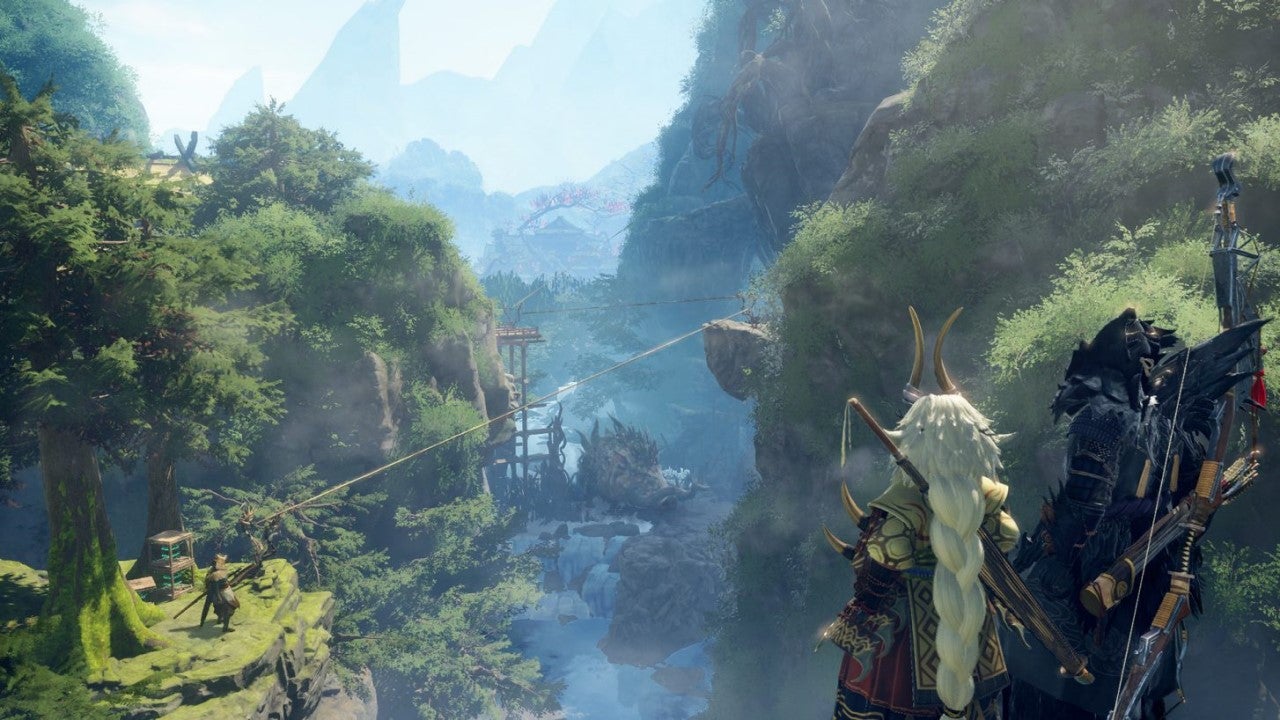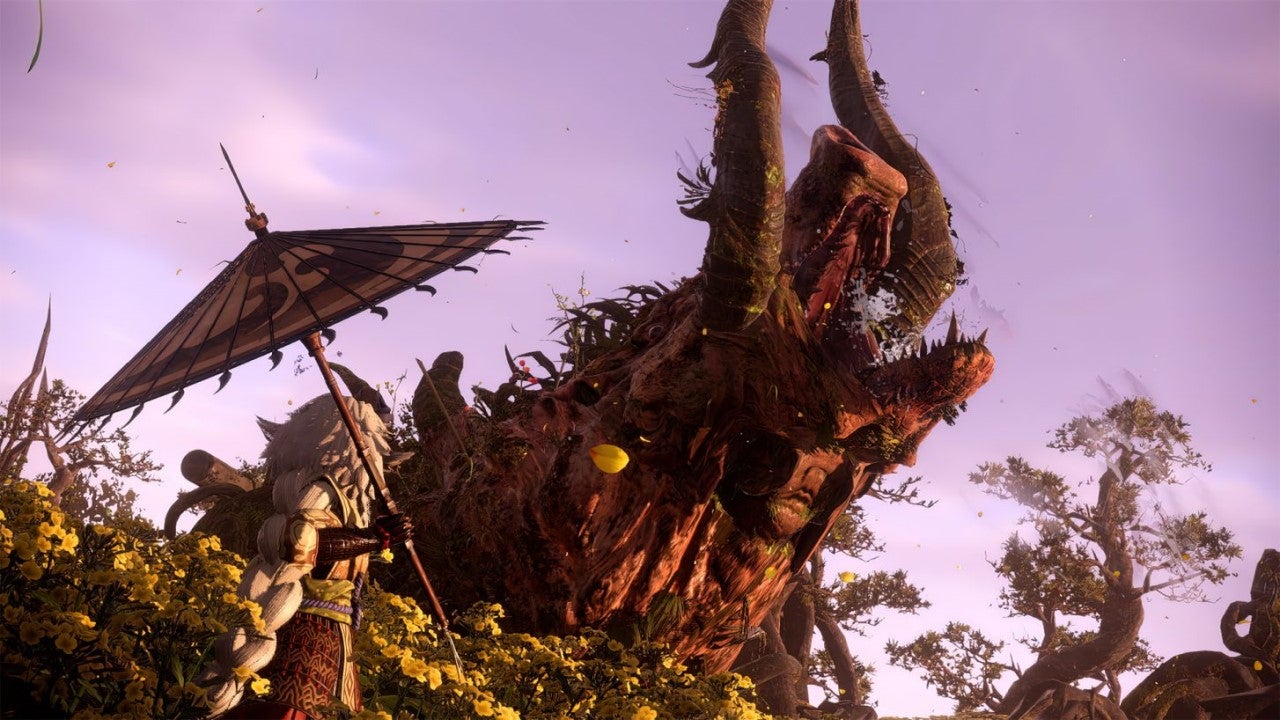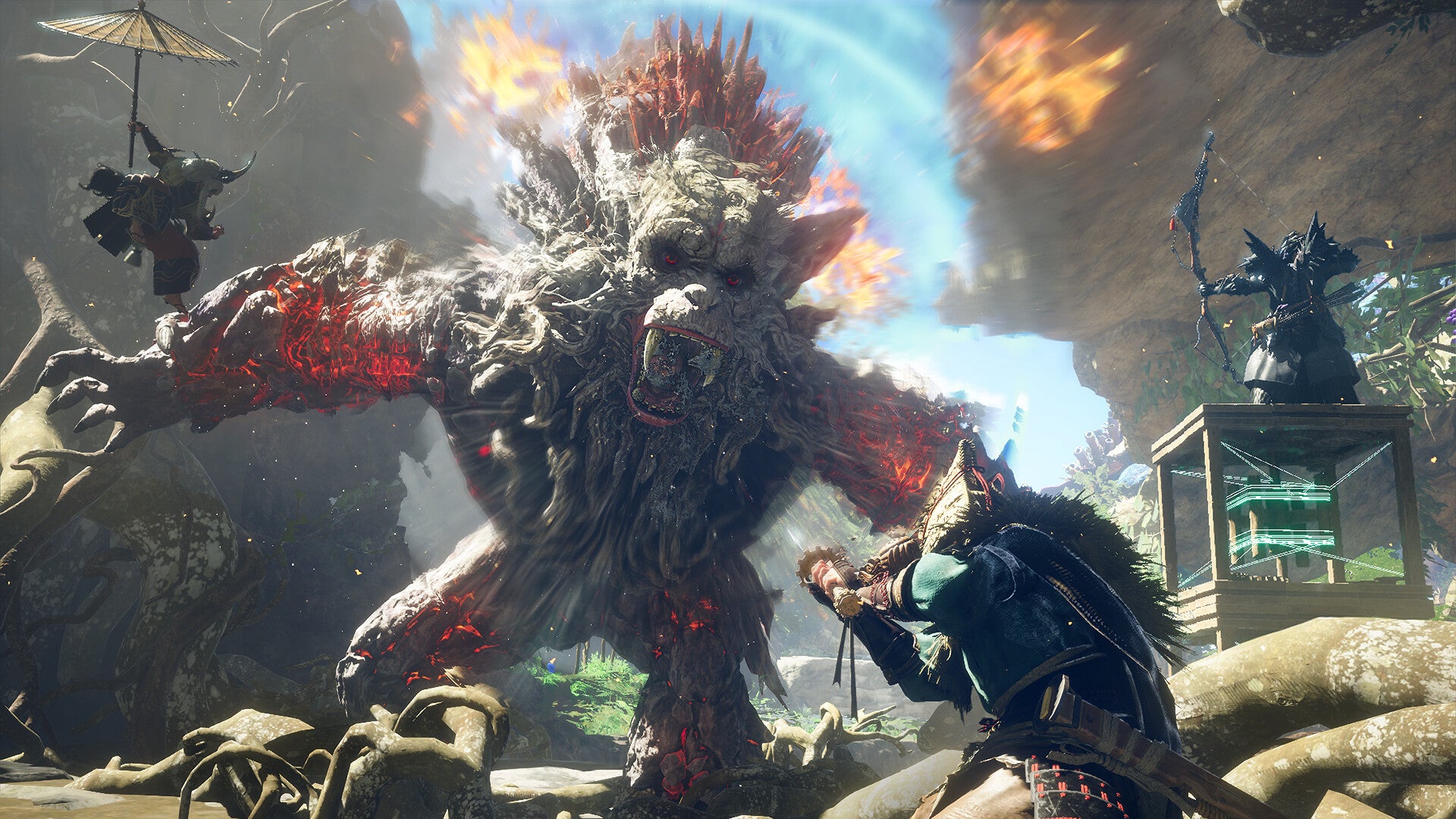One of my biggest gripes with Monster Hunter is its onboarding process: it’s exactly like a real life onboarding process. You’re hit with hundreds, if not thousands, of tooltips worded like official documentation, all to explain its many intricate systems. And while it’s not necessarily a bad thing, a huge part of successful monster hunting lies in understanding and navigating the game’s menus, before you even begin to customise them to your liking. This depth is what makes Monster Hunter brilliant, but it’s an obstacle that many players – like me, for many years – just couldn’t scramble over. From the early build I played, Wild Hearts was much easier to get to grips with than Monster Hunter. And I think that’s down to how it wasn’t structured around a bustling town already filled with merchants and blacksmiths, cat-chefs and multiple quest-givers. Instead, I was guided through a story-driven tutorial that largely equated to “There are Kemono (monsters) knocking about the gaff and that’s bad, so please knock them out of the gaff, cheers.” It introduced me to the basics of combat, which felt suitably weighty (you know me, it has to be weighty) and eased me gently into making a camp, which, it turned out, was at the centre of the game’s rhythm. So, rather than being plopped into an overwhelming hub space like Monster Hunter, you’re the one who builds the community from scratch. There are magical nodes scattered around the map called Dragon Lodestones that act like upgradeable resource pools, as well as areas to set up camp. These act as fast-travel points, as well as spots to build huts to house your trusty blacksmith and other contraptions that’ll make your life as a Kemono-killer easier and more efficient. So long as you’ve got enough resources in your Lodestone, you’ll be able to pop down stuff that lets you auto-target monsters on the map, rather than having to search for their location yourself, or even drying racks to, errr, dry your veg. And because you’re the one who slowly builds things and crafts camps, it makes for a far less overwhelming experience from the get-go. You’re less a gigantic gecko in the headlights and more of a gigantic gecko who begins to understand that the road is a reliable source of meals on wheels. Not that Wild Hearts is all that different from Monster Hunter, really, because when the Kulu-Yak-Kus come home to roost, it’s a third person action-RPG where you must hunt monsters, harvest them for resources, and make increasingly nice pants from them. Of course, you can free roam around a map and hunt monsters without any particular objective or accept a quest from the campfire and begin a bespoke assassination mission. Then there’s the other little similarities, like being able to cook meals to bolster your stats before you hunt (these are far easier to understand, though) and tackle fights with co-op pals if you’d like. There is, however, one key difference between Wild Hearts and Monster Hunter’s combat, and it lies in these magical boxes called Karakuri. You know how in Fortnite people can build literal forts to protect themselves, or a ramp to gain a vantage point on the fly? Well, Karakuri is a simpler version of the same concept. At the press of a couple of buttons – it’s very intuitive – you can magically spring a stack of boxes into existence mid-fight, which you can use as a top rope from which to Swanton Bomb your enemies like Jeff Hardy. Karakuri weren’t essential for the fights I took part in, but they were certainly very helpful in conjuring helpful scenarios out of thin air when faced with an enormous marsupial crossed with a cherry blossom tree and an equally enormous lava badger. It was neat being able to take advantage of a stunned monster by immediately hopping off a stack of boxes and delivering a massive plunging attack. One time, I even created a stack of boxes as a last-minute barricade to stop the flower rat from charging me down. Later, I unlocked another Karakuri ability which let me create a launchpad box that would fling me forwards if I hopped onto it. And the neat thing about the launchpad box was its versatility, as I was able to combine it with my usual box-stacks to create the equivalent of an aerial side-step or gap-closer. I suppose the Karakuri are similar to the Wirebugs from Monster Hunter: Rise, but I think their permanence as objects adds a more interesting dynamic to fights, as you’re largely able to shape a slab of land into a battlefield that works in your favour. Some aspects of the monster hunting in Wild Hearts weren’t quite as intuitive as Monster Hunter, at least not in the build I played, anyway. While the combat was brilliant and weighty and filled with flashy combos no matter if you button-mash or not, the monsters’ reactions to your hits aren’t as natural. If a huge swing of your club connects with a monster’s skull in Monster Hunter, more often than not you’ll knock them to the ground while a ring of stars dances above their heads. And as you weaken a monster, they might shed armour or act more desperately. But in Wild Hearts, monsters don’t seem to display too many behavioral reactions to your hits. Sure, they might act more aggressive or limp away mid-fight, but there are less obvious recoils from hammer blows or cunning tricks if the odds are stacked against them. Still, Wild Hearts really impressed me! At its heart (heh), it’s very similar to Monster Hunter, but the introduction of Karakuri and less reliance on tooltips makes for a less intimidating time. Not to forget that it largely gets the basics right. If anything, the fact that Koei Tecmo (more specifically Omega Force) are on the project gives me hope, as they’ve got great experience making games centered around deep, rewarding combat. Wild Hearts is due out 17th February next year and I think it’s shaping up to be a bit of a hit.



